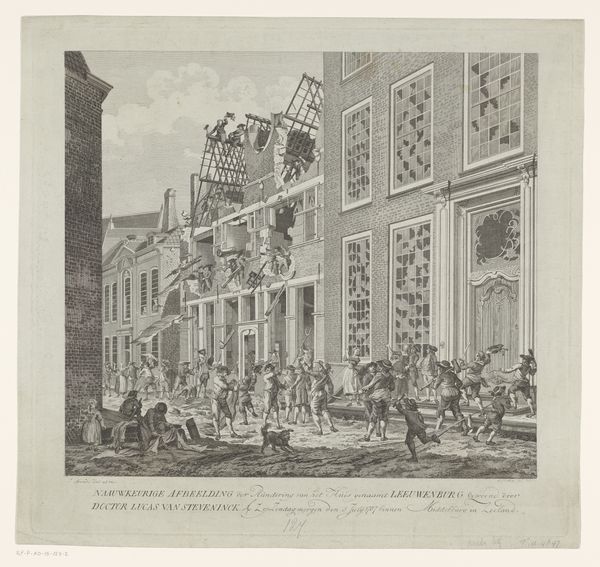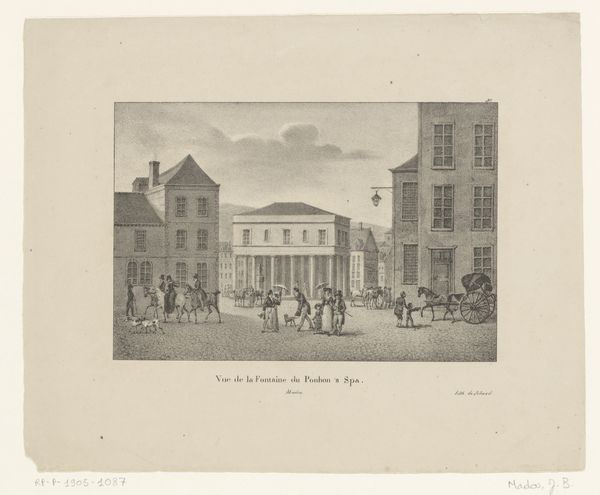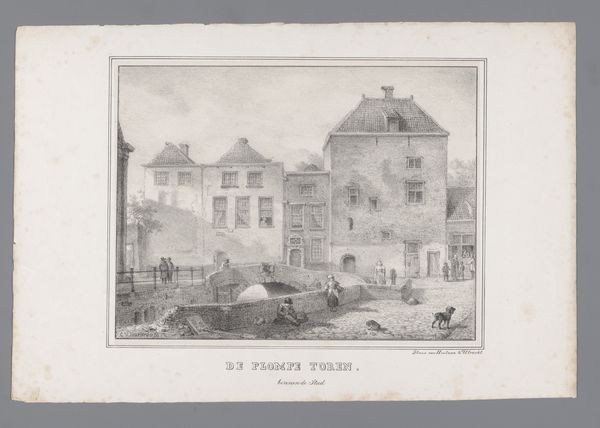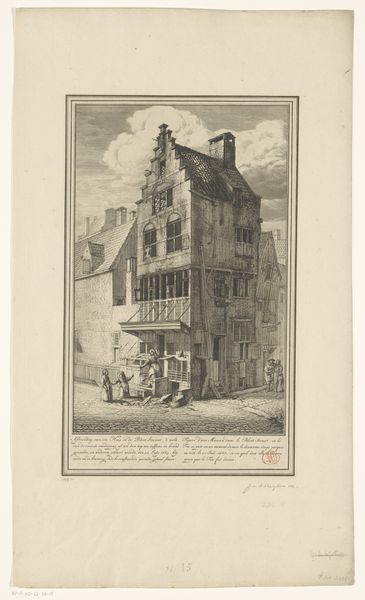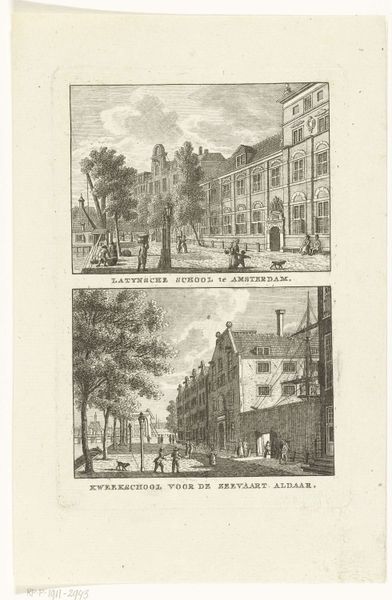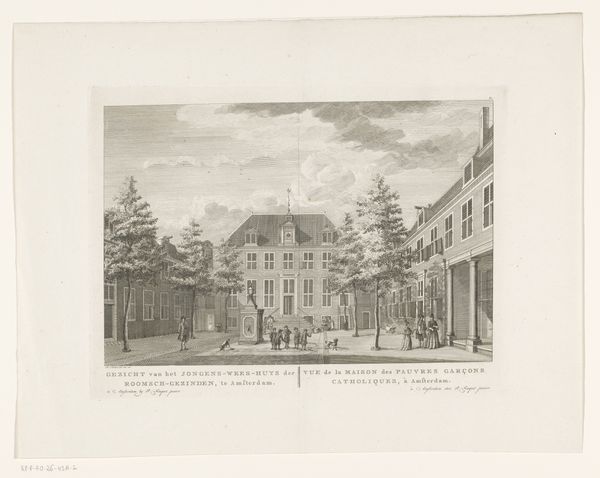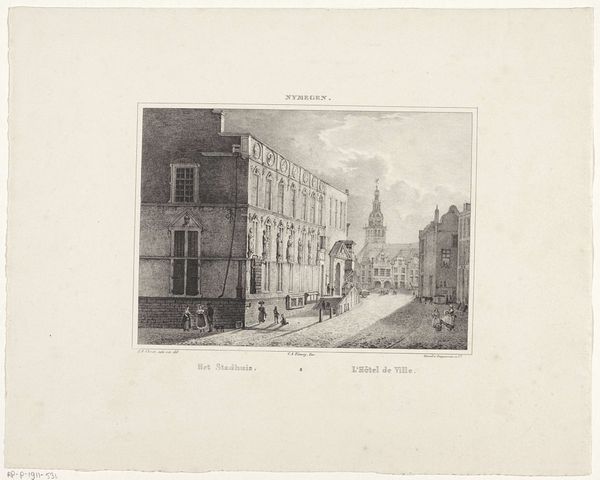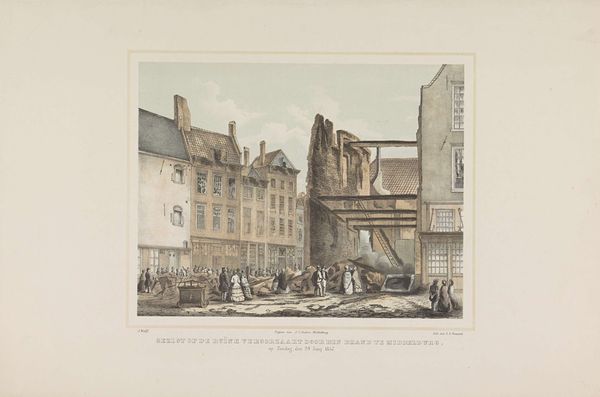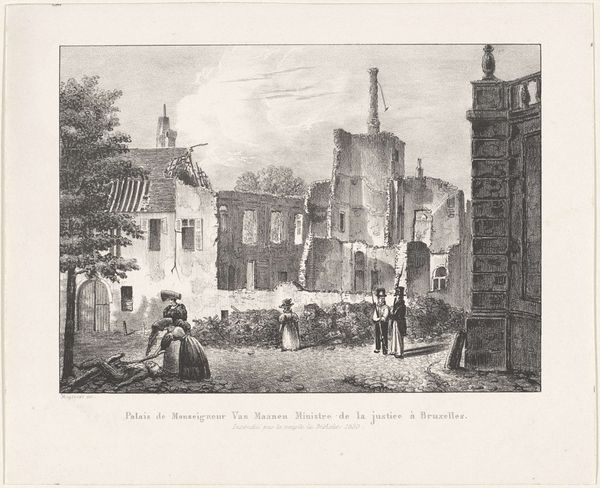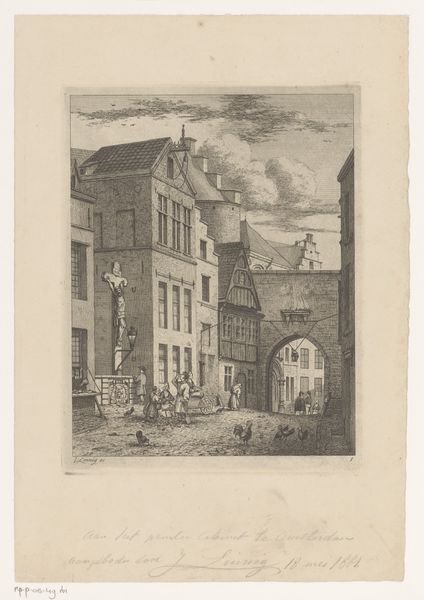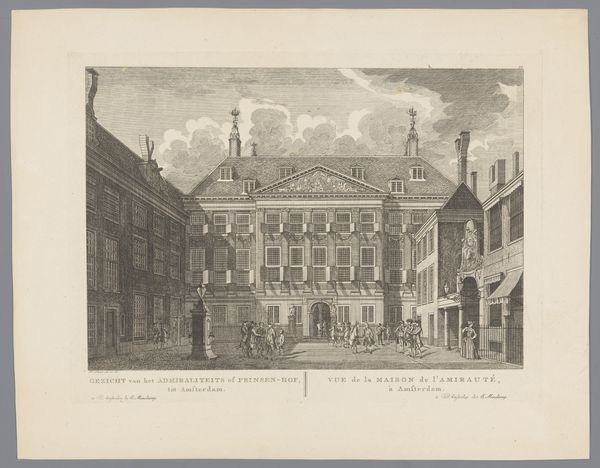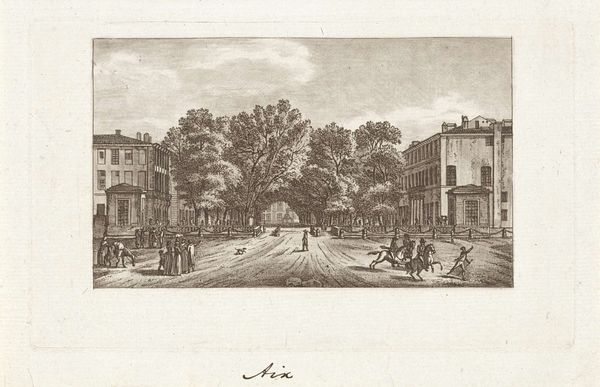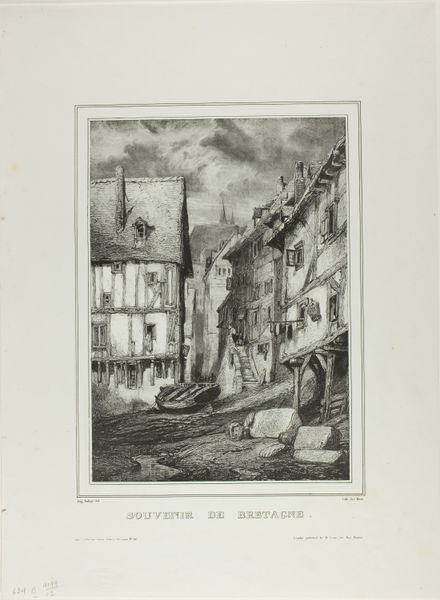
print, engraving
# print
#
romanticism
#
cityscape
#
history-painting
#
engraving
#
realism
Dimensions: height 234 mm, width 306 mm
Copyright: Rijks Museum: Open Domain
Curator: Editor: Here we have Théodore Fourmois' 1831 engraving, "Geplunderd huis van mr. Matthieu," or "The Plundered House of Mr. Matthieu." It feels almost like a stage set, stark and eerily quiet despite the visible damage. What do you see in this piece? Curator: It does, doesn’t it? It’s the stillness that gets to me. It captures that moment of awful, gaping silence after a storm has passed. This work shows Mr. Matthieu’s home after it was looted during the riots. But the true power lies in Fourmois’ ability to imply the violence. The open shutters, the debris – they’re all potent symbols, aren't they? What story do you think they’re trying to tell us? Editor: Definitely, the shutters are shouting! And the emptiness is almost… dramatic? The little cluster of people in the foreground seem small against the scale of the destruction. It's definitely creating an overwhelming scene with that sharp contrast! Curator: Precisely. Now, consider the time. This was Belgium in 1831, a time of upheaval as the Belgian Revolution had occurred only a few months before this engraving was made public. How might that context influence your understanding of what Fourmois is communicating? Editor: So the house isn't just some random place—it represents something bigger about that political chaos and civil unrest. The realism kind of clashes with what I'd assume looting to look like, but if Fourmois meant to express Romanticism by focusing on his feelings through realism, then I can almost feel like I'm in that moment, viewing something deeply intimate. Curator: Spot on! You have it. Realism is key to connecting us in that present moment of shock. Fourmois allows us a visceral insight into loss of personal space and the emotions the subjects may be experiencing at the time. This piece transforms into an intensely human document, doesn’t it? Editor: Absolutely. It started off feeling detached, but understanding the history gives it a raw, emotional core. Curator: Indeed. It’s a powerful reminder that even seemingly simple images can contain a wealth of historical and emotional resonance.
Comments
No comments
Be the first to comment and join the conversation on the ultimate creative platform.
